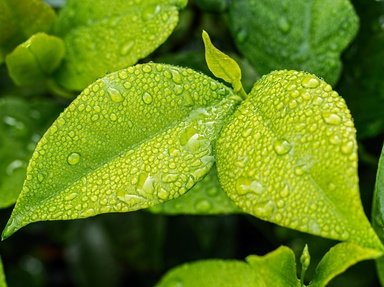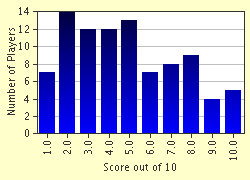Quiz Answer Key and Fun Facts
1. The tallest flowering plants in the world dominate the canopies in the wet tall forests of south-eastern Australia. The scientific name for this species of plant is Eucalyptus regnans. What is its common name?
2. Shallow limestone soil and minimal precipitation prevent any trees from growing on the Nullarbor Plain on the southern coast of Australia. This extraordinary and magnificent ecosystem is dominated by shrubs of which plant genus?
3. The Great Victoria Desert is Australia's largest desert. It is a sandy desert, and some of the vegetation is scrubland dominated by mulga - a species complex belonging to the genus Acacia. But the more open areas are dominated by a distinctive hummock grass that typifies arid Australian vegetation. What is this type of grass commonly called?
4. The jarrah and marri forests of south-western Australia are famous worldwide for the spectacular wildflowers that grow in the understorey, and the south-west is one of the world's biodiversity hotspots. Unfortunately, these forests have been attacked in recent decades by a micro-organism which causes extensive dieback. The micro-organism is often spread from one location to another in the mud crusted on machinery used for road-making and logging. What is the little horror's scientific name?
5. The Lake Eyre Basin in central-eastern Australia is the driest place on the continent. A large area surrounding the lake, particularly to the west of it, is known as the Stony Plains. This ecosystem type is typically saline plains covered in gibbers: small stones made round and shiny by the microscopic action of frost condensation, eroding the stones minutely over millennia. The area can be freezing overnight and searingly hot during the day. Conditions are so harsh that vegetation is very sparse. Which of these plant genera could possibly grow here?
6. This plant species is one of the most widespread eucalypts in Australia, common even in dry areas because it follows watercourses, and takes advantage of periodic flooding events. The Barmah-Millewa Forest on the Murray River is the largest forest of this species in the world. What is the common name of this plant?
7. Where do Melaleuca (paperbark) thickets typically grow?
8. One of the most biodiverse vegetation types in Australia is the Queensland wet tropical rainforest. Unlike most Australian forests, which are dominated by eucalypts, the rainforest canopy is made up of diverse genera, many affiliated with tropical species from southeast Asia. The wet tropics biome is patchily distributed over the landscape though, and is thought to have been much more extensive 50,000 or more years ago. Partly, the forest has been destroyed by land clearing since European invasion. But what is hypothesised by some to be the main reason for the rainforest's demise over the past 50,000 years?
9. A common sight in the understorey of temperate forests and woodlands are native pea flowers, which comprise about five percent of all Australian plant species. The largest genus of Australian pea is Pultenaea. Most Pultenaea flowers are small and yellow with red or brown markings. What is their collective common name?
10. The largest genus of Australian plants is Acacia, commonly known as wattle. In Australia, Acacia has about a thousand species. Which of the following biogeographic regions has the greatest species richness of Acacia species on the continent?
Source: Author
Phyllis_n_Jean
This quiz was reviewed by FunTrivia editor
crisw before going online.
Any errors found in FunTrivia content are routinely corrected through our feedback system.

